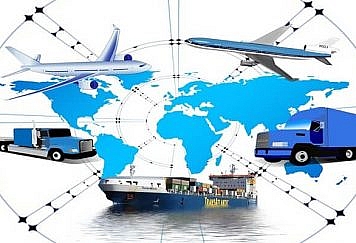Businesses spend outstanding amounts of money to acquire goods, and then they spend even more money to get those goods into the hands of paying customers. So, the last thing any company wants is for those goods to sustain serious damage at some point during the shipping process. Damage is expensive for so many reasons: It requires businesses to pay once more for return shipping, to repair or replace damaged goods, to offer discounts to disgruntled customers, and to lose business from customers dissatisfied by the damaged state of their products. Throughout history, many organizations have shuttered because of an inability to prevent damage during shipment.
If you continue to experience damage in your shipments, you may need to make drastic changes to how you ship products from here to there. Here is a primer on the common causes of damaged cargo and what you might do to mitigate damage in the future.
2 Reasons for Damaged Cargo
Likely, you already know that cargo can be damaged in all sorts of ways. Moisture might seep into packages and cause harm to delicate electronic components; excessive heat or cold might cause fresh produce to spoil. However, despite all the various ways damage can occur, there are two simple primary reasons for damage during shipping: the carrier and the shipper.
Carrier Fault
The carrier is the company that takes responsibility for physically conveying products from one location to another. The United States Postal Service is a popular carrier amongst consumers, and freight lines like FedEx, Old Dominion, and YRC are some of the largest carriers in the country. Carriers are often at fault for causing damage to shipments through rough handling, which occurs when handlers and delivery drivers do not employ care with packages. Treatment such as dropping or kicking packages as well as a failure to secure packages within the shipping vehicle properly can cause products to sustain harm.
Additionally, carriers can be at fault for damage to shipments through failure to maintain their shipping containers properly. For example, insufficient insulation may cause more significant temperature changes within the container, affecting sensitive goods like pharmaceuticals or batteries in negative ways. Compromised containers may allow moisture to enter and pool around packaging, resulting in varying degrees of water damage. Temperature-controlled containers with heaters or refrigeration units require even more diligent maintenance, and if these units fail, entire shipments may be ruined.
As the company carries goods from here to there, carriers must be accountable for a large amount of the damage that occurs to shipments. Fortunately, when carriers are at fault for shipping damage, shippers can seek compensation by filing damage claims — as long as they have adequate evidence of the source and extent of the harm.
Shipper Fault
The shipper is the company that owns or is currently overseeing the items that are being transported. In almost all cases, shippers are responsible for preparing goods for shipment. This includes placing goods inside appropriate packaging and using monitoring tools that will give shippers and carriers information to keep the goods inside safe and secure.
Shippers are at fault for damage when the packaging used is inadequate for protecting the goods inside. For example, when a product is thrown around a shipping container because the sealing tape on its packaging failed, the shipper is to blame for selecting and applying the poor-quality tape. Similarly, when an item is broken inside its packaging due to rattling around an empty box, the shipper is responsible for the damage. Most often, damage caused by shippers is the result of cutting corners in packaging to reduce costs associated with shipping, but usually, the costs of damaged goods far outweigh the costs of appropriate packaging solutions.
What Shippers Can Do to Reduce Damage
Though a certain amount of damage is unavoidable in shipping, there are a few ways that shippers can all but eliminate damage caused by their own negligence. Here are the best solutions for reducing damage in shipments today:
Change Shipping Method. Some goods fare better with specific modes of transport. Items that are exceedingly sensitive may need to be flown to their destination, as overground transport can be slow and more treacherous, leading to higher rates of damage.
Use Monitoring Tools. Shippers can use impact indicators, temperature indicators, and other monitoring tools to track the treatment of their goods as they travel. With this information, shippers can make better decisions about the carriers they rely on.
Improve Packaging. With packaging, shippers get what they pay for. It might be necessary to experiment with different types of packaging to identify packaging methods that keep products appropriately safe during transit.
When your goods continue to sustain damage during shipping, you might feel like you are living in a nightmare. By learning more about the potential causes of injury — and what you can do to prevent them — you can take control over your shipping processes and see more tremendous business success.
Follow TechStrange for more Technology, Business, and Digital Marketing News.





